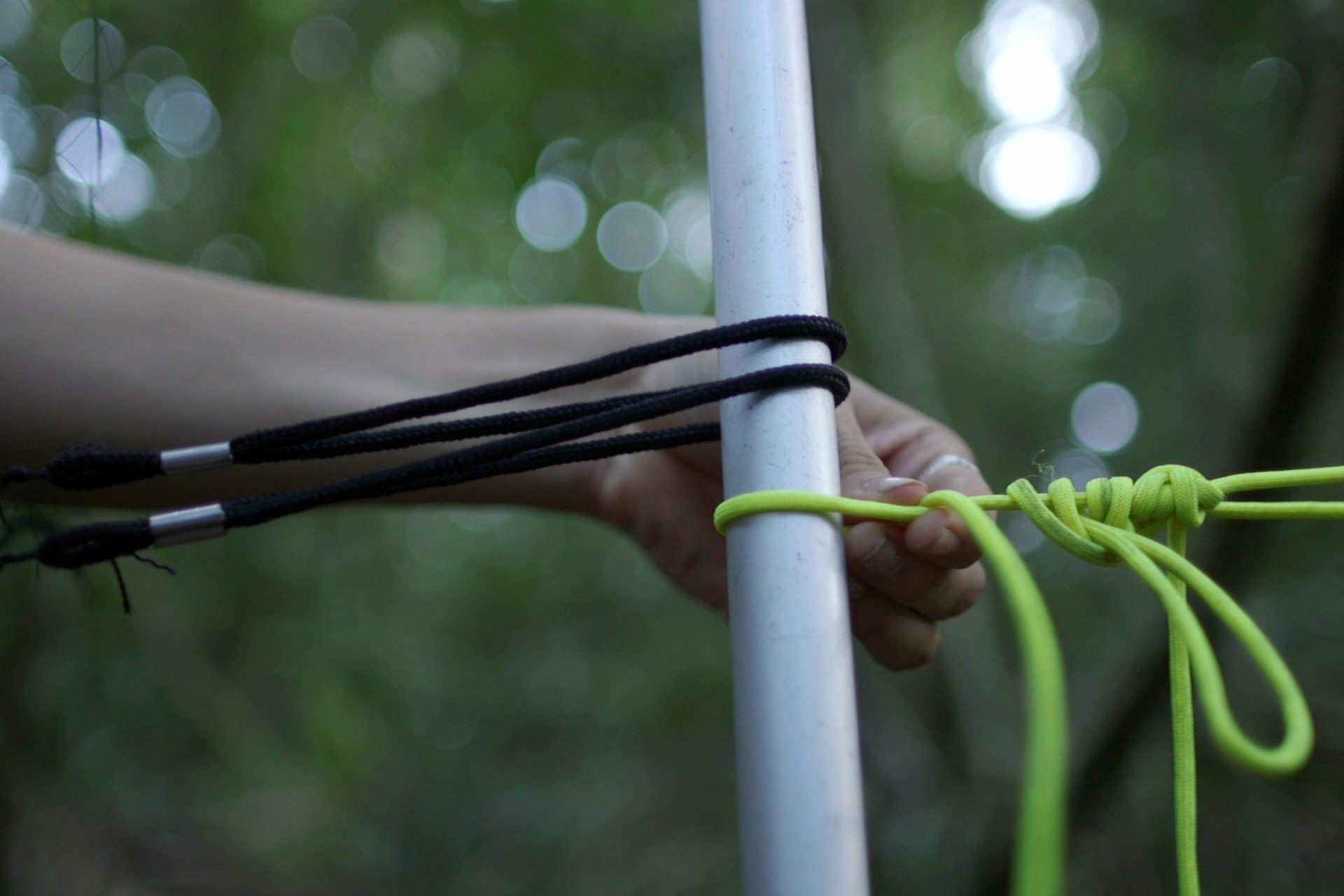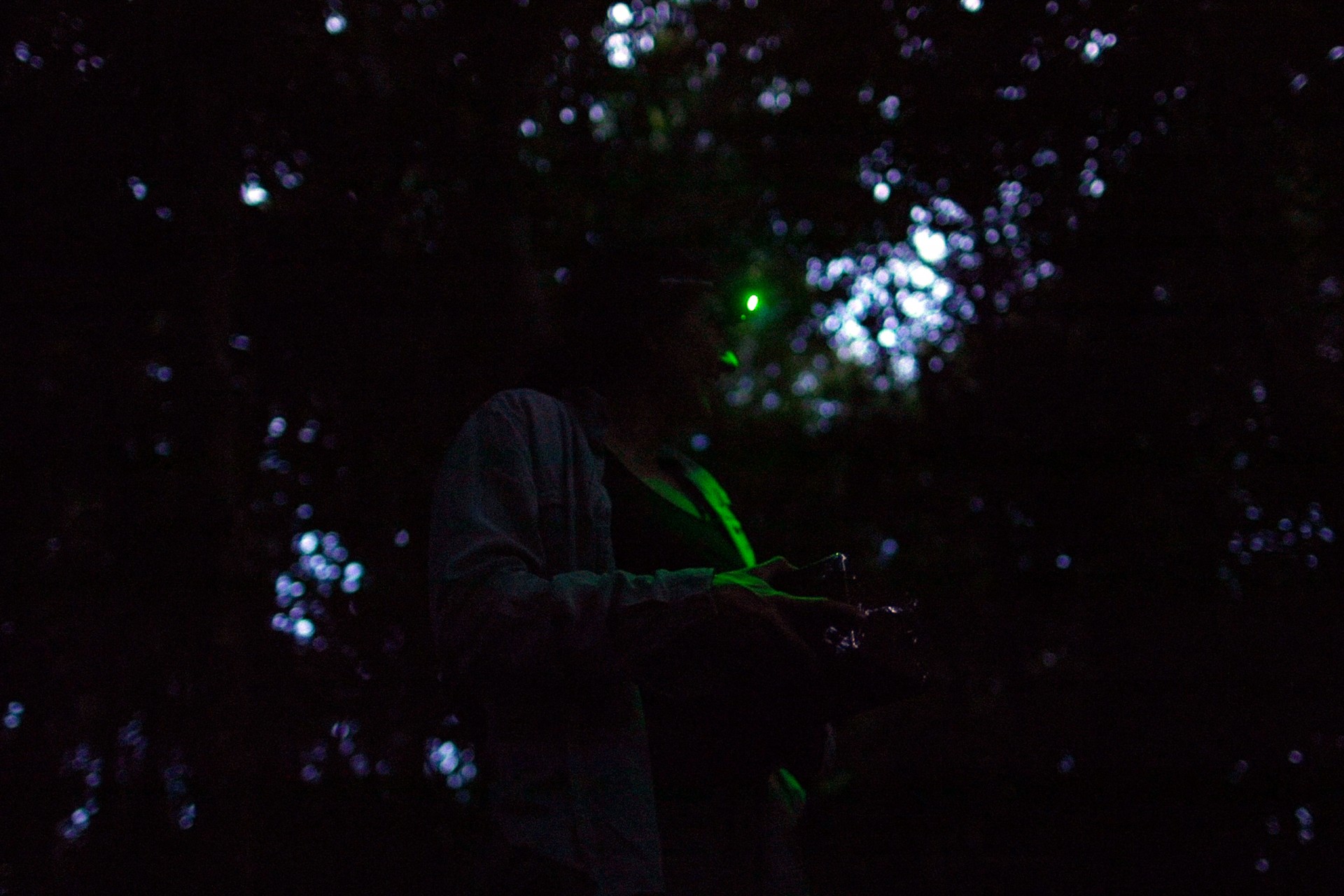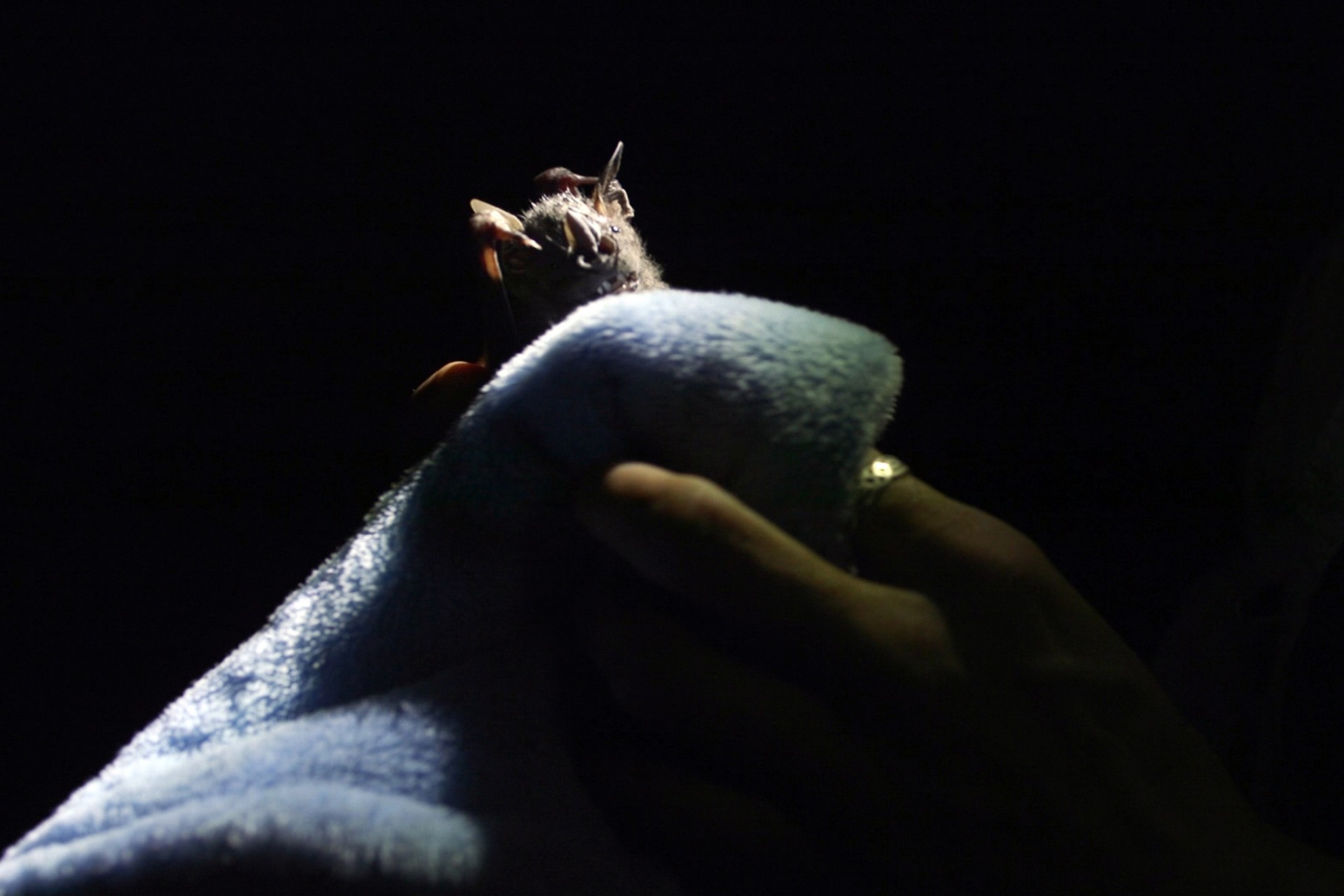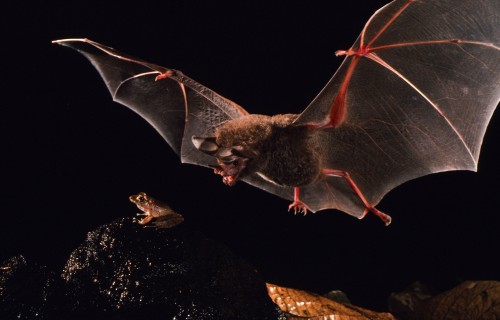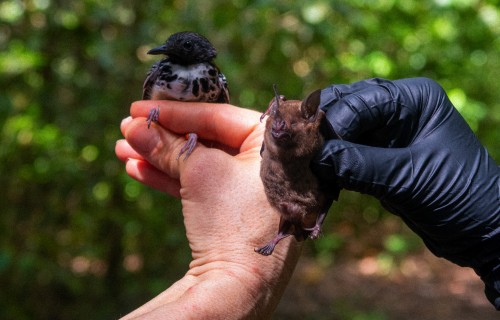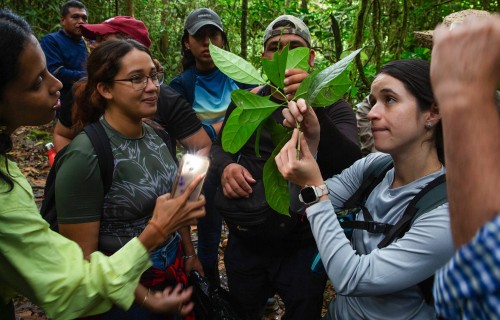Leafcutter ants have blind
spots, just like truck drivers
Sneaky
Are bats spying on
their prey in the canopy?
Barro Colorado island
Byline: Leila Nilipour
Eavesdropping behavior in the canopy may answer questions about how acoustic interplay among animals has developed over millions of years in the forest
It’s nearly dusk when Amanda Savage starts hiking up a trail in the forest on Barro Colorado Island (BCI). She is a bat biologist and short-term fellow in Rachel Page’s Lab at the Smithsonian Tropical Research Institute (STRI), curious about the interactions between bats and their prey in the canopy. In particular, she wants to understand how bats take advantage of the sexual sounds their potential prey emit at different heights.
To do so, she became a certified tree-climber and designed a hand-made camera-trap system attached to a speaker, that could be raised up to 20 meters from the forest floor. Once in the canopy, the speakers were programmed to play the sounds of male cicadas or katydids after dark, when the hungry bats leave their roosts.
Bats are known for echolocating. They emit a sound wave and use the echo it produces as a mechanism for navigating at night and for locating their prey. Insects, in turn, might react to this echolocation by reducing the sound of their calls, or employing other defensive behaviors.
Researchers in the Page Lab have been intensively studying gleaning bats, hunters that take their prey not in mid-air, but instead off vegetation, the forest floor, and other surfaces. Because of the dense clutter in forests, echolocation doesn’t work well for finding prey in these environments.
Gleaning bats surmount this difficulty by listening for the sounds produced by their prey, either incidental noises prey make as they move through the environment, or prey communication calls. Attending to prey sounds is a process called ‘passive listening’. Bats in the forest understory are well documented to do this, but it’s currently unknown whether bats foraging in the canopy do this too. Amanda wanted to find out.
“If bats are eavesdropping on a signal, they’re not announcing that they’re coming, they’re just listening. It’s a sneaky way to home in on their prey,” says Amanda.
With three sets of the camera traps and speakers—one placed on the ground and two in the forest canopy, at 12 and 20 meters from the ground, playing the same insect sounds—Amanda hopes to gather information on video about which calls are especially attractive to bats at different heights. This, in turn, could give Amanda an idea about whether height plays a role in the ability of eavesdroppers to use prey mating calls to locate them.
“This might be the first evidence of bats eavesdropping on prey signals in the canopy,” Amanda highlights.
This is exciting for her, because it begins to answer questions about how predator and prey interactions may have developed over millions of years. Understanding the acoustic interplay of these animals is also crucial for conservation purposes.
For instance, the forest canopy is a highly specialized habitat for predator-prey interactions. Noise pollution and forest removal may affect the natural interactions that have been developing for millennia and greatly impact species that depend on this special habitat to attract mates or to find their food.
Amanda is now analyzing several months of data and applying to PhD programs, with the hope of continuing to ask and resolve bat ecology questions in the future.
“My short-term fellowship at STRI really helped me develop my research abilities, and being on BCI was the best opportunity to observe things naturally as they are. It has been a great moment for my transition into science,” Amanda concludes.

